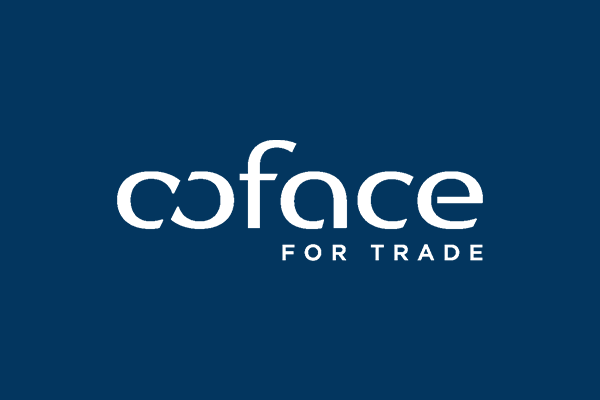There are welcome signs that the UK is finally headed for calmer waters after years of economic and political headwinds, while it seems to be a case of slow and steady growth in Ireland. Jonathan looks at what this means for trade risk and identifies some distant threats on the horizon.
Headlines
Coface forecasts UK growth of 0.6% in 2024 and 1.1% in 2025 and our country risk rating is unchanged at A4 (reasonable). In Ireland, we’re forecasting slower growth but the risk assessment remains A3 (satisfactory).
Global growth forecast revised upwards to 2.5% in 2024 and 2.7% in 2025 due to economic resilience of major economies. We expect rebound in activity in Eurozone and emerging economies.
Four country upgrades: Spain (A2), Portugal (A2), Cabo Verde (A4) and Bahrain (C). One downgrade: Ecuador (D).
Downgrade for the UK wood sector (very high risk) and upgrade for transport (high risk).
Overall, 20 sector upgrades, mainly in transport, paper and energy. Just six downgrades, including textile-clothing in Middle East and Türkiye. The textile-clothing sector is now considered very high risk in all regions except Asia-Pacific.
Jonathan’s view:
What’s Coface’s current assessment of the global economy?
The resilience of China, USA and Europe since the start of 2024 prompted Coface to improve our growth forecasts for 2024 (2.5%) and next year (2.7%). We now expect a more limited slowdown in China and the USA and this will be offset by recovery in Germany and the Eurozone and acceleration in the emerging economies, especially in Asia.
But while the outlook is better than the start of 2022 (energy shortages) or 2023 (a US banking crisis), there’s no room for complacency about economic risk. In particular, inflation remains stubbornly above target in the US and eurozone which means that interest rates are likely to remain higher than is comfortable for many businesses who are already facing tight margins. We therefore expect the rate of corporate insolvencies to rise.
What factors explain the improved economic outlook for the UK and what does this mean for insolvency risk?
We’re forecasting slight growth this year (0.6%) and expect this to pick up in 2025 (1.1%). The UK economy has generally performed better in 2024 with a stable service sector, positive signs in the manufacturing sector and little deterioration in the labour market. The Bank of England didn’t make a move in June, but all the signals are that interest rates are likely to fall slowly in the second half of the year. While this will help the economy, the effect will be gradual and sticky inflation (partly due to high wage growth) will limit the scope for rate cuts.
In terms of corporate insolvencies, the Insolvency Service stats show the numbers are falling but they’re still very high. There were 2,168 insolvencies in the UK in May, down 18% from the same month a year earlier although compulsory liquidations were up by 34%. A lower interest rate will help indebted companies and yet the average debt repayment to turnover is still at the highest level in 15 years so debt servicing will continue to be an issue.
For this reason, companies can’t afford to relax their guard when it comes to credit management. Even if they’ve been trading with a customer or supplier for many years, it might not survive another 12 months if it can’t renegotiate a loan on affordable terms or if one of its own customers fails. That’s why it makes sense to have access to Coface’s early warning system to evaluate and monitor trade partners, as well as protect yourself against the risk of financial loss with credit insurance.
Why has Coface upgraded the UK transport sector and downgraded wood?
The UK was one of five countries where we upgraded the transport sector in our latest barometer (from very high to high risk). This largely reflects the strength of the aviation industry with number of flights still rising and tourism indicators good. The International Air Transport Association (IATA) is forecasting record passenger numbers for 2024 and reported a full recovery in global traffic (measured in revenue passenger kilometres) in February for the first time since the pandemic.
Activity in the freight transport sector should also boosted by an improvement in global trade and increased consumer spending. However, factors like high energy costs, disruption caused by the Red Sea attacks and changes to border control between the UK and EU still make this a high-risk sector.
We made the decision to downgrade the UK wood sector (from high to very high risk) because activity within the sector is still falling. The construction sector – a key off-taker – remains weak, as does furniture production and sales and insolvencies in these sectors are high.[SF1]
Coface upgraded Ireland a year ago, what has happened to the economy since and are you still optimistic?
It’s really a story of two economies: Ireland’s multinational sector which has been dominant in terms of wealth creation, saw a slowdown after a buoyant period in 2021 and 2022, whereas the domestic economy has continued to grow at a stable rate. Modified domestic demand grew by 2.6% in 2023, for example, while GDP fell by 3.2% in 2023[SF2] [PC3] . Our forecast is for the domestic economy to continue growing in 2024 and 2025, albeit at a slow pace, again helped by rising real wages and lower interest rates. Meanwhile, multinationals’ activity should benefit from an improved global economic landscape and interest rate environment.
We expect the surge in corporate insolvencies to continue in 2024 – partly due to a return to normal after government intervention (the requirement for filing winding up petitions going back to its pre-pandemic level). Although the year-on-year increase will be higher than everyone is used to, it will actually bring the overall number of insolvencies back to 2017-18 levels.
In this year of elections, how are the UK and Ireland being impacted by political risk?
All indications are that the Labour Party will win the UK election with a large majority[SF4] [PC5] which should mean more stability for UK businesses than in recent years. However, there’ll be limited fiscal wriggle room for any incoming government and many commentators expect taxes to rise. Both parties are generally seen as slightly over-optimistic about what can be achieved through public sector productivity improvements and clamping down on tax avoidance, but extra revenue is likely to be needed for public spending, rather than addressing long term issues with infrastructure and productivity.[SF6]
Fine Gael’s Simon Harris only became Ireland’s prime minister in April 2024 after the surprise resignation of Leo Varadkar but there’s less than a year before he must face a general election (which must be held by March 2025). The campaign is expected to centre around the two big issues of affordable housing and migration. The current coalition (Fine Gael, Fianna Fáil, and the Green Party) has around 43% of the vote but there’s been a significant fall in support for the main opposition party, Sinn Féin, over the past year (from polling around 33% in 2023 to 23% now) and some of their voters have turned towards more right-wing candidates. With Sinn Féin struggling in the polls and the possibility of a generous budget in Autumn, the PM could be tempted to go early.
What global risks should exporters be aware of?
A more stable international economy – at least in contrast to the last five years – should be good for global trade but geopolitical risks remain. In addition to the ongoing conflicts in Ukraine and Israel-Gaza, there’s also the growing possibility of a trade war between competing power blocs – the US, China and the EU. In early May, for example, the Biden administration announced a sharp increase in tariffs on Chinese goods such as steel, semiconductors and electric vehicles, on top of the tariffs previously introduced by Donald Trump. In June, the European Union followed suit by announcing additional customs duties would come into force at the beginning of July on electric vehicles produced in China.
While these moves are largely designed to support home-grown industry, it reflects an increasingly complex and uncertain context for global trade. Trade interventionism has been on the rise in recent years and the escalation of customs barriers is synonymous with increased costs for businesses.
Coface’s regular economic publications will keep exporters in touch with the likely effect of these developments in their markets, while our business risk dashboard helps research the credit risks affecting businesses by country or sector. But if you want a complete tool for monitoring trade credit risk within your portfolio, our URBA350 tool is hard to beat with data and expert insights on millions of companies in more than 195 countries.




